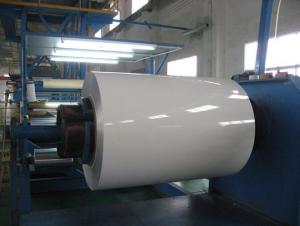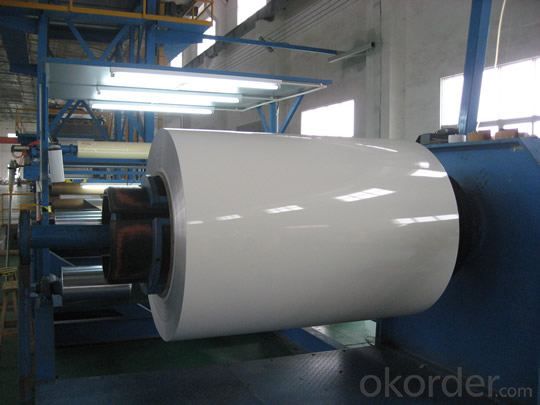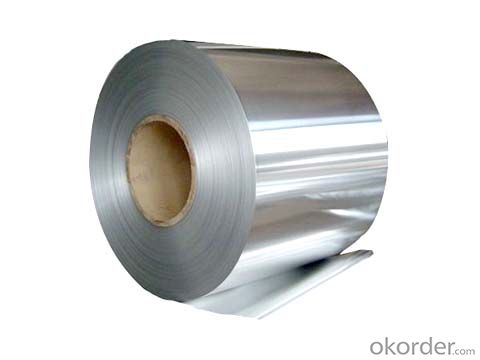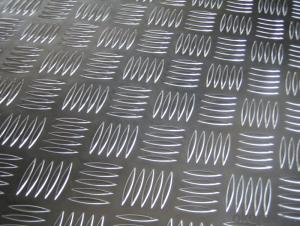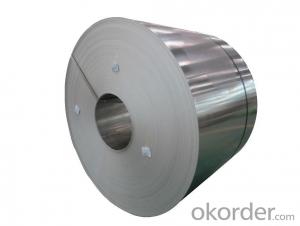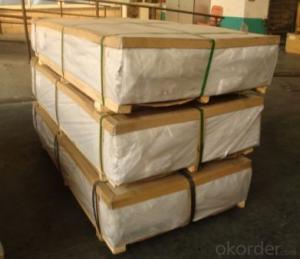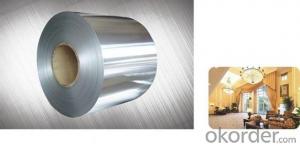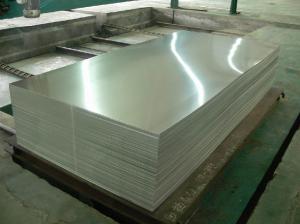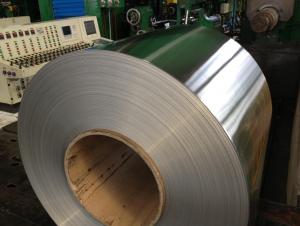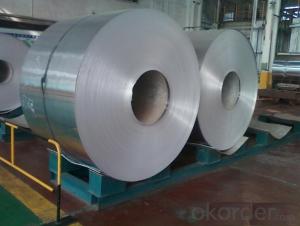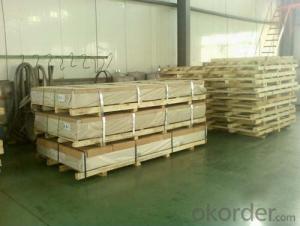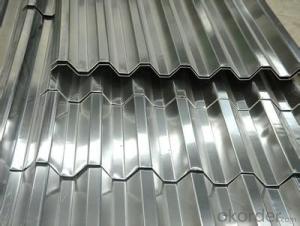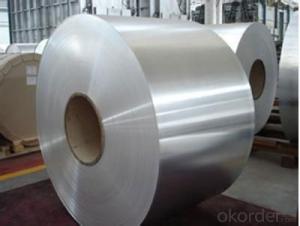Continuous Casting Corrugated Metal Aluminum Sheets for Rerolling
- Loading Port:
- Shanghai
- Payment Terms:
- TT or LC
- Min Order Qty:
- 5 m.t.
- Supply Capability:
- 20000 m.t./month
OKorder Service Pledge
OKorder Financial Service
You Might Also Like
Specification
1.Structure of Continuous Casting Aluminium Foil Stock for Rerolling
Continuous Casting Aluminium Foil Stock for Rerolling is one semi-finished aluminium material. This strip can be rolled down to aluminium coil,sheet,circle ect. The alloy AA1050 is widly used in building, industry ect. Its weight is much lower than steel. So many customers choosed aluminium material instead of steel.
2. Main features of Continuous Casting Aluminium Foil Stock for Rerolling
a.Competitive price---We have our own mills and can produce mill finished aluminium coils, so we can control the production cost better.
b.Professional after-sale service---We have more than 15 years exportation experience and you need not worry about the exporation problems.
c.Fast delivery time---We can control the delivery time within 35 days.
3. Image
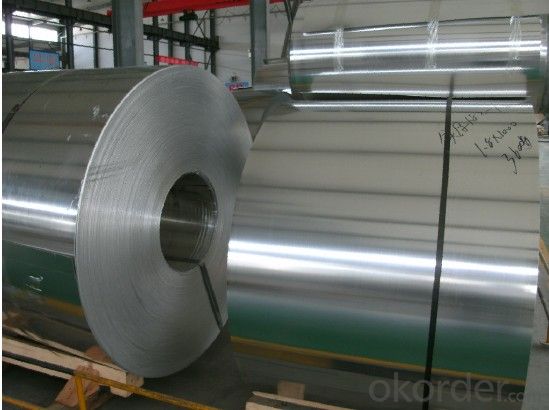
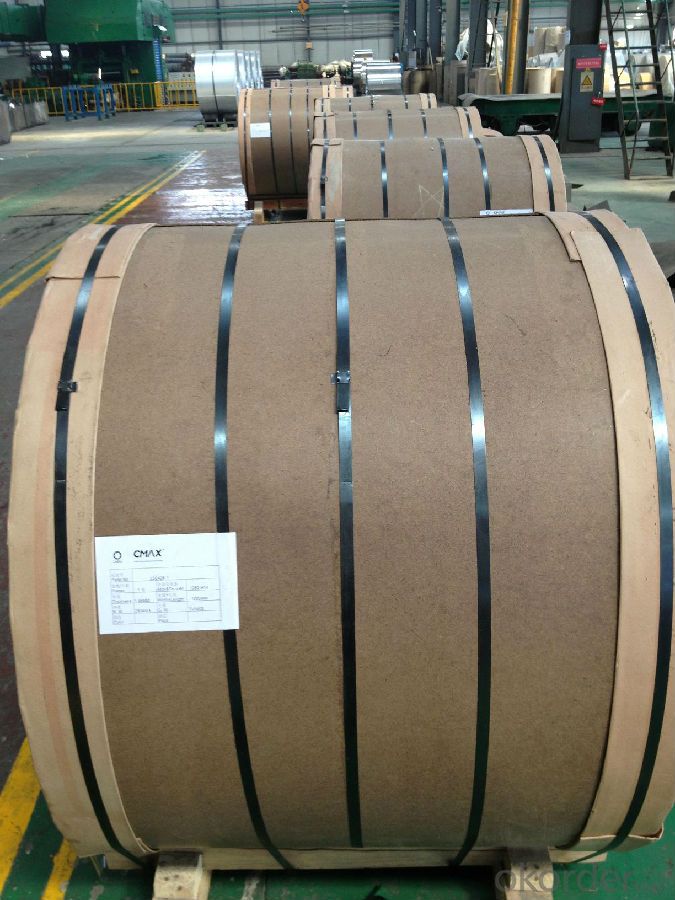
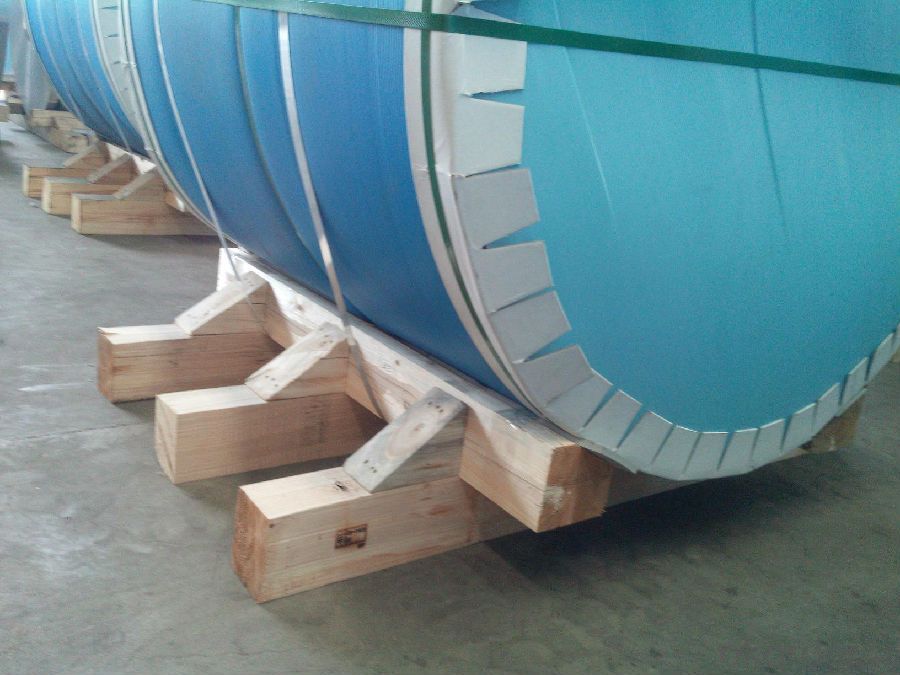
4. Product Specification
| Alloy | Temper | Thickness | Width | Weight |
| AA1050,AA3XXX,AA8XXX | H18,H14,F | 0.2MM-3MM | 1000MM-1500MM | About 2.5 tons |
5.FAQ:
What is the quality standard?
---Usually our standard is GB3880-2006
What is the largest width?
---It is 2300mm
What is the MOQ?
---Usually we can accept 80 tons.
- Q: How does the surface roughness affect the friction properties of aluminum sheet?
- The surface roughness of an aluminum sheet affects its friction properties by increasing the surface area in contact with another object, leading to higher frictional forces. A rougher surface will have more irregularities and asperities, creating more points of contact and interlocking with the opposing surface. This increased contact area enhances the adhesion between the surfaces, resulting in higher friction. Conversely, a smoother surface with fewer irregularities will have reduced contact area and less adhesion, leading to lower friction.
- Q: Where is the difference between the 5052 aluminum plate and the 1060 Aluminum plate?
- Ingredients:5052 alloy aluminum (aluminum magnesium alloy, aluminum content of about 95%, magnesium content of about 4%, as well as some other trace metal elements)1060 is pure aluminum (aluminum containing 99.6%, margin for other metal elements)Physical property:Similarly, the two kinds of aluminum, 5052 to 1060 higher in hardness, elongation, tensile strength and so on are not the same. What are the specific states (H14, H32, H24, O, etc.)?Prices are usually 5052 above 1060. How much specific higher, according to different manufacturers and production processes vary.
- Q: Can 101 aluminum sheets be CNC machined?
- CNC machining is capable of processing 101 aluminum sheets, allowing for the creation of intricate and accurate cuts, holes, and shapes. This versatile and precise manufacturing process is commonly employed for aluminum materials. It involves computer-controlled machines that remove material from the sheets. The CNC machinability of 101 aluminum sheets is not restricted by their specific alloy designation. Nevertheless, to achieve optimal results, it is crucial to take into account factors like cutting parameters, tool selection, and feed rates when machining these sheets.
- Q: This question asks for a list of various adhesive types that are suitable for bonding aluminum sheets together.
- <p>There are several types of adhesives used for bonding aluminum sheets, including epoxy adhesives, which are strong and resistant to heat and chemicals; acrylic adhesives, known for their flexibility and UV resistance; cyanoacrylate or super glue, which offers fast bonding; polyurethane adhesives, providing excellent adhesion and durability; and silicone adhesives, which are great for high-temperature applications. Each type has its specific properties and applications, making them suitable for different bonding requirements and environmental conditions.</p>
- Q: This question asks for methods to maintain a smooth and even surface finish on an aluminum sheet after it has been installed.
- <p>To ensure a smooth and even surface finish on an aluminum sheet after installation, follow these steps: 1. Choose high-quality aluminum sheets with a consistent thickness and surface texture. 2. Use appropriate cutting and shaping tools to avoid scratches and deformations. 3. Clean the surface thoroughly before installation to remove any dirt or debris. 4. Apply a protective coating or sealant if necessary, following the manufacturer's instructions. 5. Install the aluminum sheet using proper techniques and hardware to avoid warping or unevenness. 6. Inspect the surface regularly for any signs of wear or damage, and address them promptly. By following these steps, you can maintain a smooth and even surface finish on your aluminum sheet after installation.</p>
- Q: Can aluminum sheets be used as a substitute for steel in certain applications?
- Yes, aluminum sheets can be used as a substitute for steel in certain applications. Aluminum is a lightweight and versatile material that offers several advantages over steel. It has a high strength-to-weight ratio, meaning it can provide the same strength as steel while being significantly lighter. This makes aluminum sheets an excellent choice for applications where weight reduction is critical, such as in aerospace, automotive, and transportation industries. Additionally, aluminum is highly resistant to corrosion, which eliminates the need for additional protective coatings or treatments. This property makes aluminum sheets suitable for applications in marine environments or other corrosive conditions. Aluminum sheets also exhibit excellent thermal conductivity, making them ideal for applications that require heat dissipation, such as heat exchangers or radiators. Furthermore, aluminum is more malleable than steel, allowing for easier shaping and forming. This characteristic makes aluminum sheets suitable for applications that require complex or intricate designs. However, it is important to note that aluminum has a lower tensile strength compared to steel. Therefore, in applications that require high load-bearing capacities or structural integrity, steel may still be the preferred choice. In such cases, a careful evaluation of the specific requirements and trade-offs between weight, strength, and cost should be considered before deciding on using aluminum sheets as a substitute for steel.
- Q: How do you calculate the weight of an aluminum sheet?
- To determine the weight of an aluminum sheet, one must take into account its dimensions (length, width, and thickness) as well as the density of aluminum. Initially, one should measure the length, width, and thickness of the aluminum sheet in either inches or millimeters. It is crucial to use a consistent unit of measurement throughout the calculation. Subsequently, if necessary, the dimensions should be converted to feet or meters. For instance, if the dimensions are in inches, divide each value by 12 to convert them to feet. To ascertain the volume of the aluminum sheet, multiply the length, width, and thickness together. In case the dimensions are in different units, they must be converted to the same unit before multiplying. Next, consult a reference for the density of aluminum. Aluminum's density is approximately 2.7 grams per cubic centimeter or 2700 kilograms per cubic meter. Convert the volume of the aluminum sheet to the same unit as the density. For example, if the density is in kilograms per cubic meter and the volume is in cubic feet, multiply the volume by 0.0283 to convert it to cubic meters. Lastly, multiply the volume of the aluminum sheet by the density of aluminum to determine the weight of the sheet. The resulting weight will be in grams or kilograms if the density was in grams per cubic centimeter, or in kilograms or metric tons if the density was in kilograms per cubic meter. It is important to note that this calculation assumes a uniform thickness throughout the aluminum sheet. If the sheet has varying thicknesses, one must calculate the weight of each section individually and then sum them to find the total weight.
- Q: What is the typical density of aluminum sheets?
- The typical density of aluminum sheets is around 2.7 grams per cubic centimeter.
- Q: What are the different surface patterns or textures available for aluminum sheets?
- There are several different surface patterns and textures available for aluminum sheets, each designed to serve specific purposes and provide unique aesthetic appeal. Some of the most common surface patterns or textures for aluminum sheets include: 1. Smooth: Smooth aluminum sheets have a flat and polished surface without any visible patterns or textures. This type of finish is often used for applications where a clean and sleek appearance is desired, such as architectural elements or interior design. 2. Diamond Plate: Diamond plate aluminum sheets feature a raised diamond pattern on the surface, which provides excellent traction and slip resistance. This texture is commonly used for flooring, stairs, ramps, and industrial applications where grip and durability are essential. 3. Brushed: Brushed aluminum sheets have a consistent linear pattern created by brushing the surface with fine abrasive pads. This finish gives a satin-like appearance, making it popular for decorative purposes like signs, furniture, appliances, and automotive trim. 4. Stucco: Stucco textured aluminum sheets have a raised pattern resembling a stucco wall finish. This texture is achieved by embossing the sheet with a stucco roller, creating a rough and durable surface. Stucco patterned sheets are commonly used for exterior cladding, roofing, and decorative applications. 5. Hammered: Hammered aluminum sheets have a unique texture that resembles the surface of hammered metal. This finish is achieved by imprinting the sheet with a pattern of small indentations using a hammer or similar tool. Hammered sheets are often used for decorative purposes, such as backsplashes, countertops, and art installations. 6. Perforated: Perforated aluminum sheets have a pattern of small holes punched into the surface, allowing for airflow, light transmission, and sound absorption. This texture is commonly used for architectural elements, screens, filters, and ventilation systems. These are just a few examples of the surface patterns and textures available for aluminum sheets. Each texture serves a specific purpose and provides distinct visual appeal, allowing for a wide range of applications in various industries.
- Q: Can aluminum sheet be used for cookware?
- Yes, aluminum sheet can be used for cookware. Aluminum is a popular choice for cookware due to its excellent heat conductivity, which allows for even heat distribution and quick heating. It is lightweight, durable, and resistant to rust and corrosion. Additionally, aluminum cookware is affordable and relatively easy to clean. However, pure aluminum is a soft metal, so it is often combined with other materials, such as stainless steel or nonstick coatings, to enhance its durability and nonstick properties.
Send your message to us
Continuous Casting Corrugated Metal Aluminum Sheets for Rerolling
- Loading Port:
- Shanghai
- Payment Terms:
- TT or LC
- Min Order Qty:
- 5 m.t.
- Supply Capability:
- 20000 m.t./month
OKorder Service Pledge
OKorder Financial Service
Similar products
Hot products
Hot Searches
Related keywords
